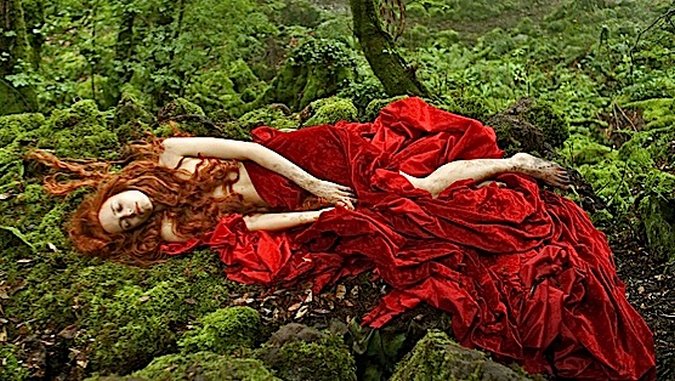It’s become apparent, over the best part of
the past decade, that the Italian filmmaker
Matteo Garrone has an eye, a nose and a taste for excess. His breakthrough
work, 2008’s Gomorrah, exposed – in quasi-documentary fashion – the hold
exerted by organised crime over one Sicilian housing estate, while establishing
Garrone’s fondness for sprawling, multi-character frescoes. Frame by frame, you
felt him succumbing to that excess in 2012’s Reality, a blaring
state-of-the-Berlusconi-and-Big Brother-nation address that made Paolo
Sorrentino’s recent output look quietist by comparison.
With his first English-language feature Tale of Tales, Garrone’s stretching his
canvas further still, attempting to film at least some of the Pentamerone, the
sprawling compendium of myths and legends assembled by the 17th
century poet Giambattista Basile. Basile’s book set out the state of the
Italian nation as it was circa the Middle Ages: it has a literary analogue in
the work of the Brothers Grimm, and a cinematic one in Pasolini’s Trilogy of
Life, although Garrone displays a predilection for luscious, gory effects that
mark his take as very much a product of the Marvel age.
So it is that we’re introduced to the Queen
of Longtrellis (Salma Hayek, more imperious here than Hollywood has ever
allowed her to be), who sees her husband succumb to a sea monster before
raising an albinoid son who proves an even bigger nightmare; to the King of
neighbouring Highhills (Toby Jones), who forsakes his daughter upon falling
hard for his pet flea; and to the lusty King of Strongcliff (Vincent Cassel),
introduced performing cunnilingus on two damsels simultaneously (who says men
can’t multitask?), before finding himself unknowingly bewitched by a pair of
crones.
The themes in these carefully selected
strands – birth, death, courtship, parenthood, ageing – are as big as one might
find in any better-known fairytale, yet Garrone maintains a playfully ironic
tone throughout. Though he knows he has it within his playbox and his preferred
post-production house to create wonders, our storyteller keeps his tongue
firmly in cheek, alert to the fact that, in this day and age, it might be
considered a little silly, even unseemly, for a grown man to be dealing with
jugglers, ogres and other monsters.
This puckish quality certainly provides an
alternative to the monolithic self-seriousness of the superhero movies we’re
meant to take as gospel nowadays; the result is never less than diverting and
occasionally transporting. But is Tale of Tales properly enchanting, as the
best fairytales are? I’m not so sure. Garrone ensures his Tale barrels along;
he’s dextrous indeed in weaving together competing narrative strands.
Yet the diverse postmodern texts the film
recalls – The Princess Bride, P.T. Anderson’s Magnolia, the Harry Potter
series, Game of Thrones – realised that the spells they cast would amount to
nothing if they didn’t stop their yarn-spinning long enough to allow sincere
feeling to bleed into the material. Two hours of pastiche is both a lot and not
enough to give an audience: the artificial colours and preservatives tend to
wear off very quickly, leaving us to chew over something with a decidedly
plasticky aftertaste.
Garrone can still dot his canvasses with
choice moments, great faces, dazzling images: a Rossetti redhead awaking in a
forest, a man walking a burning tightrope. Yet set Tale of Tales against the
immersive, full-strength, hell-for-leather vision of medieval life unfurled in
the recent Russian epic Hard to Be a God, a decades-in-the-making experience
that permitted no sniggering irony whatsoever, and it begins to look a touch
insubstantial, perhaps even childish: a novelty one might hand to a toddler, a
comic strip on the back of a bubblegum wrapper.
Tale of Tales is now playing in selected cinemas, and streaming on the BFI Player.

No comments:
Post a Comment